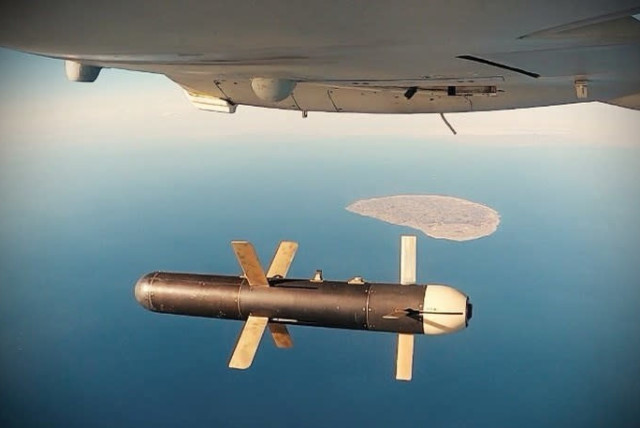Israel moves to dismantle Iran's backbone - is it working? Expert answers

Mideast expert reveals dramatic drop in Hezbollah's capabilities in daily launches, while mysterious disappearance of Quds Force commander signals deeper crisis in Tehran.
Professor Amatzya Baram, an expert in Middle East and Persian Gulf Studies, spoke with Maariv on Monday and raised significant points about Hezbollah's capabilities and Iran's policy regarding the use of precise long-range missiles.
"Hezbollah operatives are doing everything they can except for one thing – using the heavy and precise strategic missiles," noted Baram. He estimated that the Iranians have been deliberately preserving these missiles and directing Hezbollah not to launch them.
"It's important for the Iranians that we feel the threat of missiles above our heads. Now, the Iranians are in direct confrontation with us, not through proxies. The Iranians don't know where the confrontation will develop, so it's very important to them that Hezbollah preserves its precise long-range strategic missiles. According to their view, if Israel knows these missile threats exist - it will act with extra caution compared to if Hezbollah didn't have these weapons."
According to him, while Hezbollah operates many tools, including drones, missiles, and rockets, these are limited in their range and barely reach significant distances, like Tel Aviv.
"In my opinion, they have few heavy rockets left for long ranges – they can reach the Krayot, Acre, Nahariya, and even Carmiel, but struggle to reach Haifa and deeper into the country. In practice, the scope of launches they carry out is significantly lower than IDF estimates before the war broke out. The military thought that Iron Dome wouldn't be able to keep up with the launch rate at all," Baram claimed.
"The IDF's pre-war assessment of Hezbollah's launch rate was about 1,500 missiles per day - while today, there are about 200 Hezbollah launches toward Israel each day,” Baram added.
“This fact indicates severe damage to the terrorist organization's launch positions and manpower."
Baram emphasized that the ability to manage massive missile salvos is even more limited due to the lack of an organized command backbone and consistent coordination.
"The IDF has taken out about 3,000 Hezbollah field operatives, who were eliminated or wounded. We severely hit operators and the command structure, but there are still terrorist cells of the organization that can independently operate missiles and drones. As we see, they are capable of sending missile salvos. This action shows some degree of coordination between Hezbollah cells," he said.
Iran's control over Hezbollah
Baram pointed to another trend in the organization - in recent months, there has been disruption in Iran's control over Hezbollah.
"The Iranians are struggling to regain control over the organization and its details, including military mechanisms,” he said, “Part of the Iranian command in Lebanon and Syria, including Quds Force officers, were hit. This fact made it difficult to transfer ammunition to Hezbollah and created gaps in command. Among those eliminated was the deputy commander of the Quds Force, who directly supervised Hezbollah and particularly the transfer of weapons from Syria to Lebanon. Thus, it's not surprising that the Iranians are facing difficulties in trying to concentrate and command Hezbollah."
However, he estimated that Iran may try to reorganize Hezbollah over the coming months, build a strong command structure, and increase its grip.
"This is the time to exploit the disruptions and strike the organization as much as possible," Baram argued. According to him, it's important to hit command structures while Iranian forces are undergoing reorganization.
Professor Baram added interesting information about the Quds Force's struggle with the assassinations of senior command, which has undermined its activities and caused fear of crisis.
"Recently, Iran has been dealing with unclear internal challenges in the Quds Force. Ismail Qaani, commander of the Quds Force, disappeared mysteriously, and for a certain period there was concern that he was either eliminated or suspected of treason. He reappeared publicly at the memorial ceremony for the eliminated Quds Force deputy, but then disappeared again. There's a feeling that the Quds Force is undergoing significant structural changes."
Baram concluded by saying this situation has delayed Hezbollah's reorganization and emphasized the importance of attacking Hezbollah in its current state, aiming to disrupt rehabilitation efforts.
"Hezbollah is currently at its weakest point since Khamenei created it in 1982, and we must exploit this weakness."
Jerusalem Post Store
`; document.getElementById("linkPremium").innerHTML = cont; var divWithLink = document.getElementById("premium-link"); if (divWithLink !== null && divWithLink !== 'undefined') { divWithLink.style.border = "solid 1px #cb0f3e"; divWithLink.style.textAlign = "center"; divWithLink.style.marginBottom = "15px"; divWithLink.style.marginTop = "15px"; divWithLink.style.width = "100%"; divWithLink.style.backgroundColor = "#122952"; divWithLink.style.color = "#ffffff"; divWithLink.style.lineHeight = "1.5"; } } (function (v, i) { });

